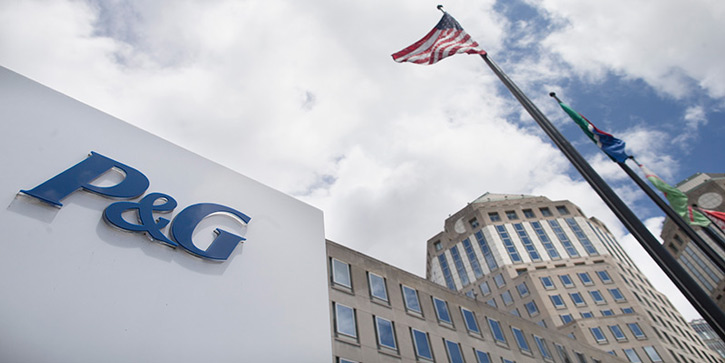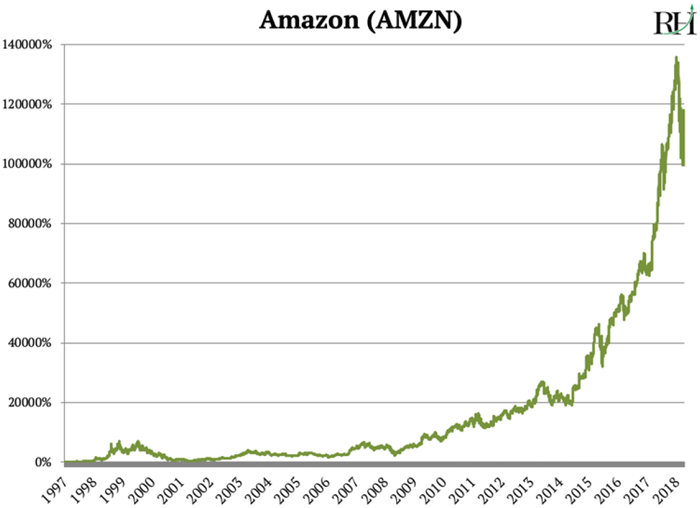
The dangerous side of “safe” stocks
- Stephen McBride
- |
- April 1, 2019
- |
- Comments
This article appears courtesy of RiskHedge.
There’s a good chance you pay through the nose to keep your money safe
One of the most important things money can buy is safety.
Would you rather pay $600,000 for a home in a safe neighborhood…
Or $250,000 for an identical home in a more dangerous area?
Even though it might mean stretching your finances and borrowing a ton of money, most American families would choose to live in a safer area.
The financial sacrifice is worth it because feeling unsafe is miserable. It ruins your ability to concentrate. It preoccupies you and stresses you out.
It’s hard to be an effective person when you’re worried your kids aren’t safe.
So we buy cars that win safety awards. We install expensive security systems. We pay the military billions to safeguard the country.
- And while you might not realize it, there’s a good chance you pay through the nose to keep your money safe, too…
The thought of losing 20% of your nest egg in the market can be scary. For many folks it’s just as gut-wrenching as the thought of a stranger breaking into your house at night.
So investors often pay giant premiums for stocks they believe to be “safe.”
You probably know that fast-growing stocks in exciting industries often command high prices.
But boring, slow-growing stocks are often expensive, too—if they’re perceived as safe.
Take Procter & Gamble (PG). It’s a 200-year-old company that’s grown into the 15th largest publicly traded company on earth by selling basic essentials.
Its brands include Gillette razors… Tide laundry detergent… Crest toothpaste… Dawn dish soap, and Bounty paper towels.
No matter what happens in the markets, we’ll always brush our teeth, wash our clothes, and clean the dishes.
Selling necessities is a rock-solid business. From 1982–2012, Procter & Gamble grew its sales 28 out of 30 years. This consistency is why P&G has long been considered one of the safest stocks on earth.
- But you must pay dearly to own P&G stock…
P&G trades for roughly 25X its profits. That’s very expensive for a business that’s seen profits drop 20% over the past decade. For reference, the average S&P 500 company trades for 21X profits.
If you own P&G stock, you’re not paying for growth. You’re not paying for a shot at big profits. You’re paying a steep price for one thing: safety.
For decades, P&G stock has held up its end of the deal.
For example, when the S&P 500 cratered 30% from the Summer of 2007 through the end of 2009, P&G held strong, losing just 1.5%.
- But regular RiskHedge readers know we’re living in the age of disruption…
As you surely know, online giant Amazon has put dozens of companies out of business in the last few years. Through selling stuff online for low prices, it has disrupted iconic brands like Toys R Us, Sears, Circuit City, and RadioShack into bankruptcy.
In 2000, online sales totaled $27 billion. This year that figure will jump above $550 billion—good for a 20X leap in less than two decades. By claiming a big chunk of this growth, Amazon has propelled its stock over 100,000% since it IPO’ed in 1997.
You can see Amazon’s incredible gains on this chart.

- While everyone’s been focused on Amazon’s takeover of retail, it has been preparing an even more disruptive assault on “safe” businesses…
Over the past three years, Amazon has launched more than 100 of what it calls “private label” brands.
They are Amazon’s own products, sold under different names.
For example: Its “Presto!” brand sells toilet paper and paper towels. And “Basic Care” sells cough and flu medicine.
Amazon now sells its own diapers… dish soap… laundry detergent… baby wipes… and around 5,000 more everyday items.
There’s not a whole lot of difference between most “essential” items. Crest toothpaste is roughly the same as Aim, which is roughly the same as Colgate. And do you really care if the batteries in your TV remote are Duracell or Energizer… or a “private label” Amazon brand?
Findings from research firm Jumpshot show Amazon already controls 97% of the online battery market. And 94% of online kitchen and dining product purchases happened on Amazon last year.
The key is Americans are buying more and more essentials online. The fastest-growing category on Amazon is food staples—like breakfast cereals. Personal care products like soap and toothpaste are a close second.
Amazon raked in roughly $7.5 billion through selling its private label products last year. Research from investment firm SunTrust suggests this will climb to $25 billion by 2022.
- Amazon has a “trojan horse” into 100 million American homes…
Over 100 million Americans pay $119/year for Prime membership. Prime is Amazon’s subscription service that gets you free delivery.
Prime members tend to buy a lot of stuff on Amazon. According to leading research firm eMarketer, Prime members spend 5X more than regular customers on Amazon. And one in every two Prime members buys something from Amazon at least once a week!
As part of Prime, Amazon offers a program called “Subscribe & Save.” In short, it lets you create an automatic subscription to thousands of products.
You simply ask Amazon to send you laundry detergent monthly… and a container of it will show up on your front porch at the same time every month.
Amazon has spent billions developing these so-called “frictionless” services. The idea is to make it so quick, easy, convenient, and cheap to get basics through Amazon, you’ll rarely bother going to stores anymore.
- Amazon’s subscription service has been around for a couple of years. What’s different now is it’s begun to heavily promote its own basic products…
Instead of ones made by other companies like P&G.
Log onto Amazon and see for yourself. It now features its own private label products prominently at the top in almost every category.
And if you order by voice—through Amazon’s Alexa device—Amazon automatically sends you Amazon brand products.
Make no mistake… Amazon is marching in on the territory of formerly safe stocks like Procter & Gamble.
My research suggests it will gradually suck the life out of these companies as more and more “essential” purchases move online.
- I’m not just picking on P&G…
As the 15th largest publicly traded company on earth, it has the most to lose.
But its “safe” peers face the same big problem.
Unilever (UN), which owns household brands like Axe deodorant and Dove skin care, has seen its sales sink below 2001 levels.
Nestle (NSRGY) sells popular products like Poland Springs water and Nescafe coffee. Its business has flatlined since 2005.
All three of these stocks trade for higher than 20x profits.
Their businesses are not growing…
Their stocks are expensive…
And the most disruptive force on the planet—Amazon—is invading their turf.
Does that sound like a safe place to put your money?
That’s it for this week.
Have you tried Subscribe & Save from Amazon? Tell me at Stephen@RiskHedge.com.
Stephen McBride
Chief Analyst, RiskHedge
|

This article appears courtesy of RH Research LLC. RiskHedge publishes investment research and is independent of Mauldin Economics. Mauldin Economics may earn an affiliate commission from purchases you make at RiskHedge.com
